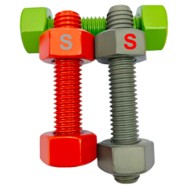
Decoding apparel proportions often reads like an insider puzzle
- Noting your individual frame starts the sizing journey
- Record chest, waistline and hip dimensions to guarantee match
- Examine the maker's fit table for accurate choice
Do not lean exclusively on size tags that may mislead you Instead, align your body stats with the brand's table. Discovering wardrobe identity is an individual experiment.
Understanding the enigma of measurement guides
Size irregularities in apparel often puzzle consumers globally. Interpreting measurement charts sometimes resembles a tough puzzle, since companies implement varied fit benchmarks. However, a little awareness and the right approach make fit simple.
- Primary step: identify whether the brand follows US, EU, UK or Asian norms. Often these include US, UK, European and Asian formats.
- Subsequently, match the exact bust, waistline, hip and length data. Compare the brand's numbers to your body data.
- Lastly, review the company's fit guidance for special advice. Guides frequently offer tips, fit notes and sizing caveats.
Spotting the right fit while you shop online
The field of apparel dimensions regularly perplexes consumers. Label names vary and medium may translate to small across makers. Variation is due to manufacturers adopting personalized charts. Consequently first take careful measurements of your body. Grab a tape measure to ascertain chest, waist and hip sizes. Don't stick solely to the size you usually wear. Sizes may change even inside the same brand depending on style. Achieving comfortable fit frequently involves testing options.

Selecting between off-the-shelf or tailored measurements
For spacebound products you must elect standard or bespoke measurements. Each selection offers distinct perks and potential downsides. Standard offers convenience and usually lower expense. Tailored measurements serve odd shapes or particular use cases best
- Gauge your priorities and budget to guide the decision
- Take precise measurements of the space or your shape
- Study vendors and product variants to find the best match
In conclusion the best fit choice corresponds to your needs.
Solving the puzzle of size translation across regions
Switching among country and label sizing often confuses shoppers. Thankfully simple conversion tables make the task manageable. Initiate learning about prevalent garment and shoe sizing conventions. Employ conversion guides to compare across size schemes. Remember that figure and proportions affect how garments sit. Don't hesitate to read reviews and size notes before buying.
An easy path to decoding garment sizes
Parsing size grids usually perplexes many shoppers. Companies tend to use their own sizing frameworks, yet this resource aims to simplify the process with clear steps.
- Start out by taking precise body readings with a tape
- Subsequently, check your stats against the manufacturer's chart
- Factor in body type since shape changes how garments fit
Conclusively, trying on remains the surest path to the right fit.
The ultimate chart for both men's and women's dimensions
Online buying amplifies sizing uncertainty for many customers. Consequently, consult this resource for men's and women's standard measures. In buying pants, shirts or dresses these tips clarify the right size.
- First tip: know that different brands and regions mean different sizes
- Second, pay attention to waist, hips, bust and shoulder measurements
- If unsure, consider selecting the next larger size
Applying these steps equips you to handle sizing charts confidently. Enjoy selecting the perfect fit!

A straightforward guide to kids' clothing measurements
Selecting proper kids' clothing sizes can be a struggle. Kids' rapid growth means sizes alter in short order. Look to the brand's chart rather than age as the sole guide. Measure child's chest, waist and height to pick correct sizeMeasuring bust, waist and hips for accurate sizing
To make clothes fit properly you must measure your body accurately. Use a soft measuring tape and a helper for best accuracy. Stand tall but relaxed with feet separated and shoulders soft
A guide to interpreting XS, S, M, L, XL and XXL
Contemporary size systems can be confusing and inconsistent. Variation between makers reduces the chance of consistent fits. Analyzing the spectrum of sizes helps resolve confusion. Let's break down what each size label signifies in reality!
Encouraging celebration of body diversity

Size inclusion is about valuing every body and its differences. It means moving beyond messages that enforce a single 'right' size. Together we can create spaces that foster body comfort and pride.
- Choose body positivity and self-acceptance every day Commit daily to encouraging body acceptance and love Decide each day to celebrate body kindness and positive views Make a habit of embracing body positivity in everyday Size Chart life
- Bear in thought that attractiveness spans diverse body types
- Push back against imagery that enforces a single beauty template
- Adopt routines that strengthen body confidence and care
